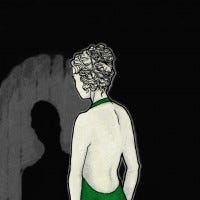Analysis: Hidden Object Love - Story In Tiger Eye
Writer and designer Emily Short looks at Passionfruit Games' Tiger Eye: Curse of the Riddle Box, and finds ideas and lessons on how even hidden-object games can develop more tightly-focused stories.

[Writer and designer Emily Short looks at Passionfruit Games' PC casual game Tiger Eye: Curse of the Riddle Box, and comes away with ideas and lessons on how even hidden-object games can develop more tightly-focused stories.] Tiger Eye: Curse of the Riddle Box is a casual game adaptation of Marjorie M. Liu's novel. The script is all written by the original author, and this shows -- it does feel like a romance novel. The characters are implausibly self-aware and spend a long time dwelling on their own feelings, and they partake of a certain Mary-Sue perfection. The hero has infeasibly broad shoulders. The heroine is the favorite person of practically every non-evil person she meets. The things that are silly genre features of romance novels continue to be silly. And did I mention that the hero is also a shapeshifting were-tiger who just happens not to be able to shapeshift right now because the villain stole his pelt? On the other hand, revelations about the plot are reasonably paced throughout the game, and there's vastly more storytelling complexity than in most casual games. The story ends with a moderate cliff-hanger -- "Curse of the Riddle Box" is only part one of at least two -- but within that time we've already gotten several important personal revelations, multiple competing enemies on our trail, and a selection of ancient legends. It feels like someone thought about story pacing, not just level design. As a collection of light puzzle gameplay, it's also decent in its line. I don't love hidden object games, but Tiger Eye mixes up the hidden object searches with a variety of mini-games. There are ciphers. There are jigsaw puzzles. There are magic square puzzles. There are spacial manipulation puzzles and pipe puzzles and word puzzles. None of these elements are very hard, but some of them manage to be clever despite being on the easy side. Add to that a generous hint system -- but with a pretty good mechanic to reward not using the hints -- and you have a game that holds the attention without repeating itself too much. So I wish that the interface between story and game had been stronger. It's not terrible. Many of the mini-games are presented as things that the heroine reasonably has to do anyway. Instead of her searching her room for bugs or bombs, you search it for her. You have to reassemble torn papers that she needs to read, or puzzle out the significance of ciphers she finds. Some of these games are less successful abstractions. I enjoyed the puzzle content of the mini-game that activated the heroine's psychic abilities, but I found the fiction of it hard to take seriously -- that I was laying out the protagonist's neurons in such a way that they would fire properly. This is not something that she ever consciously does herself, and neither does anyone else. It's an activity for me-the-player. This artificiality is a bit distancing. I don't mind -- indeed, I welcome -- the fact that the heroine is a defined person with her own preferences and personal history. I don't need to project myself into her persona in order to be interested in her story. But the gameplay here is not about learning to see things from her perspective or conquer the challenges she faces. It's about earning plot tokens. So not all the gameplay applies to the plot. Conversely, not all of the plot is interactive. The majority of the real narrative content happens in cut scenes. You can activate the psychic powers, but you can't choose what she does with them. You can't control happens in the conversations, or indeed do much of anything to contribute to them. And some of those scenes are fairly long. It didn't help me that the art for the cut-scenes is a different style from the art in other parts of the game, and that I found myself distracted by issues like improbable anatomy for the characters. I found myself quite often comparing it with another romance-oriented hidden object game I played recently, Love and Death: Bitten. Bitten has a shallow story and implausible characters -- much more implausible and generic than the ones in Tiger Eye, though I think we could be looking for better still. On the other hand, it's more effective at unfolding the plot and characterization through the hidden object sections, and making the gameplay relevant to the story. I'm kind of hoping the designers for the two franchises will take a good look at one another's work, and take notes. (Disclosure: I played a copy of this work that I purchased at full price. I have had no commercial affiliations with the publisher at the time of writing.) [Emily Short is an interactive fiction author and part of the team behind Inform 7, a language for IF creation. She also maintains a blog on interactive fiction and related topics. She also contracts for story and design work with game developers from time to time, and will disclose conflicts with story subjects if any exist. She can be reached at emshort AT mindspring DOT com.]
About the Author(s)
You May Also Like







.jpeg?width=700&auto=webp&quality=80&disable=upscale)








